 |
 Identity
and
Direction
Setting Identity
and
Direction
Setting
We
self-organize
or
create
our
lives
based
on
our
identity
-
on
who
we
say
we
are
and
how
we
feel
about
ourselves.
Who
we
are
and
want
to
be
drives
our
focus
and
our
actions.
Exploration
of
and
sharing
identity
is
the
number
one
way
to
direct
change.
It
is
the
essence
of
the
saying
"Think
Globally
and
Act
Locally."
Leadership,
Strategy,
Goals,
Objectives
and
Measurement
are
associated
methods.
|
 |
 Process
Design,
Management
and
Improvement Process
Design,
Management
and
Improvement
Processes
are
the
primary
meridians
or
pathways
through
which
products
and
services
are
delivered.
Their
design
drives
their
functioning.
They
need
to
flow.
They
need
to
connect.
They
need
to
provide
feedback
for
learning
and
adaptation.
Flowing
charting,
standardization,
data
gathering,
customer
service
methods
are
associated
tools
and
methods.
|
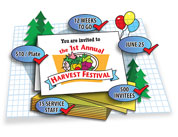 |
 Project
Planning
and
Management Project
Planning
and
Management
Projects
focus
resources
--
people,
dollars,
time
--
to
further
the
goals
and
processes
of
our
organizations.
Additionally,
projects
launch
new
directions
and
test
new
ideas.
Tools
and
Methods
associated
with
projects
include
Project
Plans,
Stakeholder
Analyses,
Constraint
Identification,
Communication
Plans,
Gantt
Charts
and
Success
Indicators.
|
 |
 Meeting
Management
and
Facilitation Meeting
Management
and
Facilitation
Meetings
are
the
steps
we
take
together
to
complete
our
projects,
improve
our
processes
and
set
our
directions.
Meetings
contain
our
shared
understandings
and
our
agreements.
Collaboration,
Facilitation,
Role
Identification,
Note
Taking,
Agenda
Setting
and
Room
Arrangement
are
a
few
of
the
tools
and
methods
of
meeting
management.
|
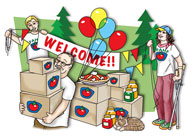 |
 Relationships
and
Teamwork Relationships
and
Teamwork
Organization
structure
includes
static
elements
such
as
physical
plant,
organization
chart,
and
production
equipment.
Relationships
and
Teamwork
are
the
dynamic
elements
of
the
organization
and
the
mechanisms
for
integration,
alignment,
learning
and
adaptation.
Clear
communication
and
collaboration
are
two
important
skill-sets
each
having
its
own
toolkit.
|
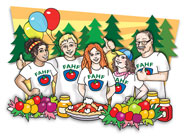 |
 Culture
Design,
Strength
and
Fit Culture
Design,
Strength
and
Fit
The
culture
of
an
organization
tracks
the
history
of
its
human
relationships,
teamwork,
symbols
and
problem-solving
experience.
Develop
a
culture
that
aligns
everyone
with
your
mission,
vision
and
agenda.
Create
symbols,
tell
stories
and
recognize
heroes
that
reinforce
your
stated
values.
Surface
your
own
and
others
assumptions
in
order
to
discover
invisible
blocks
to
living
your
ideal
culture.
|
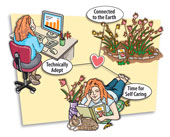 |
 Corporate
Wellness Corporate
Wellness
There
is
a
reciprocal
relationship
between
the
vitality
and
productivity
of
your
organization
and
the
wellbeing
and
motivation
of
its
people.
Wellness
programs
recognize
this
and
focus
on
the
individual
person
knowing
that
investment
in
the
human
resource
will
improve
the
company
ROI.
Building
in
human
measurements
of
wellbeing
and
satisfaction
into
the
dashboard
of
the
organization
and
supporting
individual
wellbeing
on
many
fronts
are
the
basics
of
Corporate
Wellness
initiatives.
|
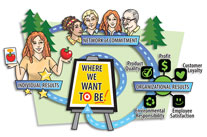 |
 Organization
Design
and
Change Organization
Design
and
Change
The
need
to
change
is
signaled
by
a
tension
between
where
you
are
and
where
you
want
to
be.
Although
changing
has
a
reactive
and
adaptive
component,
there
are
proactive
disciplines
and
practices.
Sharing
a
vision
and
a
language,
establishing
and
maintaining
relevance,
engendering
commitment,
modeling
desired
behaviors
for
others
to
emulate
and
draw
enthusiasm
from,
staying
relaxed
and
focused,
crossing
boundaries
and
changing
roles
are
a
few
of
the
strategies
for
change
in
our
organizations
and
in
our
personal
life.
|
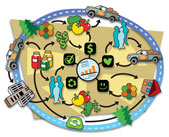 |
 Healthy
Organizations Healthy
Organizations
Where
are
we
going?
Why
are
we
working?
What
good
will
our
organizations
do?
How
will
they
serve
others?
What
environment
must
an
organizatio\n
maintain
to
perform
its
duties?
How
do
we
design
our
business
systems
to
generate
products,
services
and
wealth,
while
developing
its
workforce
and
serving
the
larger
environment
and
community
on
which
it
depends?
Thinking
systemically
and
embracing
the
heart
is
key
to
answering
these
questions.
All
the
varied
roles
we
play,
our
tools,
methods
and
strategies
are
brought
to
bear
in
creating
and
sustaining
organizational
health.
|
| |














